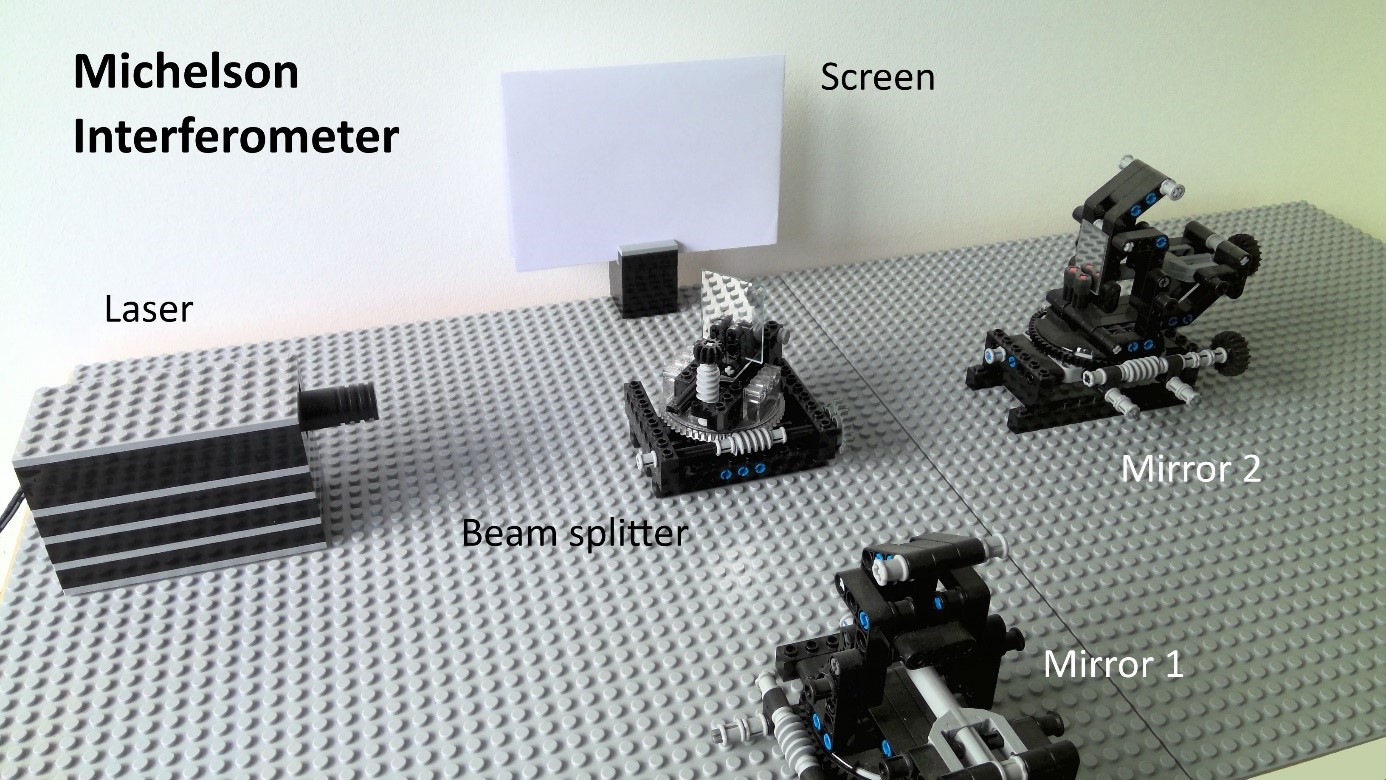Introduction
A Michelson interferometer is an optical device in which a beam of light that is as coherent as possible is split by a beam splitter into two partial beams running perpendicular to each other. The two partial beams are then reflected back with the help of mirrors and superimposed on a screen. This creates an interference pattern that provides information about the ratio of the path lengths of the two partial beams. The structure became famous because its namesake Albert A. Michelson wanted to use it to prove the existence of the aether. At that time, it was believed that a medium that filled the entire space was necessary for the propagation of electromagnetic waves. Since the experiment turned out negative, the aether hypothesis had to be dropped.
In the following three teaching units, you will learn more about the physical background, experimental details and application contexts of interferometers:
Unit 1: Introduction into Interferometry:
Unit 2: Applications of different Interferometer Types
Unit 3: Detection of Gravitational Waves
LePlanner Link: https://leplanner.ee/en/profile/1290

